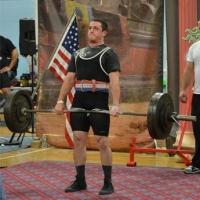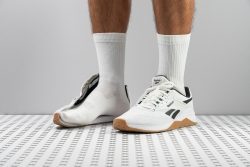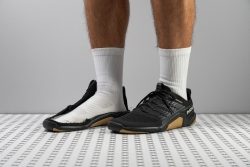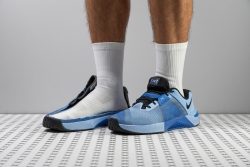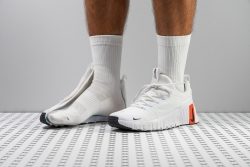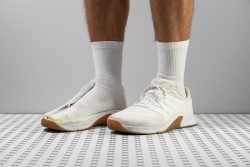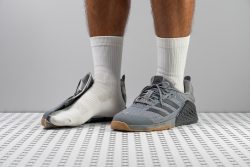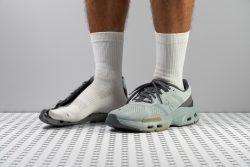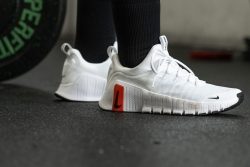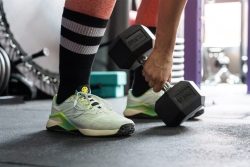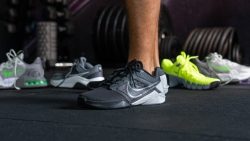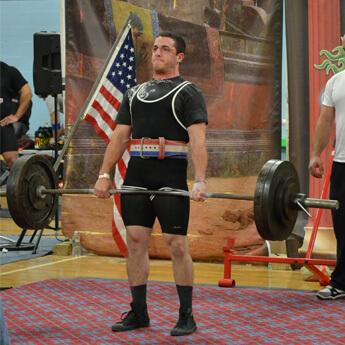7 Best Cross-training Shoes in 2025

We buy shoes ourselves. We earn commissions when you buy through us, at no extra cost. Why trust us
Lift heavy, jump higher, and strengthen those targeted muscle groups with a new pair of cross-training shoes. Yes, you can do all those workout regimens wearing just one dependable hybrid training kick. It is great for athletes and enthusiasts alike who want the best value for their money.
Hundreds of cross-training shoes have been introduced to the market to meet the growing demands of the fitness community. Giant brands like Nike, Adidas, and Reebok, just to name a few, are producing new and improved models with the latest techs for cross-training style workouts.
To help you save time, we’ve rounded up the best cross-training shoes that we've scrutinised. After testing all of them to their full potential, both in the gym and in our lab, we’ve highlighted our top picks in different categories.
How we test cross-training shoes
To filter out the best cross-trainers among hundreds of models, we put each one of them to meticulous performance and lab tests.
Our selection protocols include the following:
- We buy cross-training shoes from different brands for our wear tests. We invest our own money to ensure our 100% objectivity and bias-free approach.
- We take each model through a series of workouts to assess its on-foot feel and performance.
- We test the shoes in our lab. We slice them into pieces to not only dive deeper into all of their elements but to carefully measure different characteristics, including stack height and drop. We also test their durability, energy return, shock absorption, rigidity, breathability, and other important features.
Best cross-training shoes overall
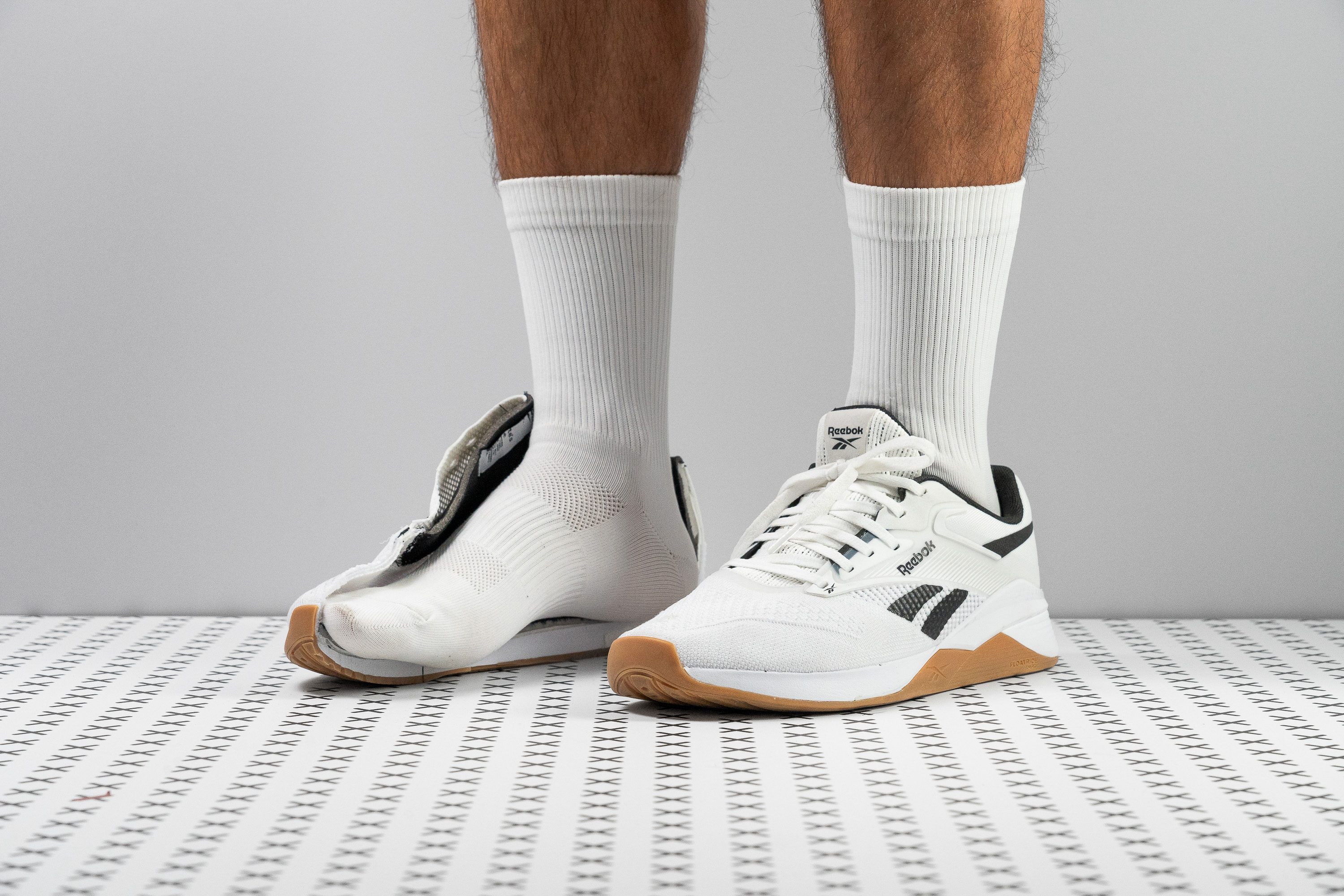













































What makes it the best?
A star performer across our various workouts is the Reebok Nano X4. It seamlessly blends comfort for jumps, support for lifting, and agility for dynamic exercises all in one shoe—making it our ultimate cross-trainer in the lab. When it comes to versatility, no other shoe comes close.
The platform strikes the balance between ground feel and cushioning. Our durometer shows the forefoot is notably firmer at 30.0 HA compared to the softer 27.0 of the heel. The former enhances agility and provides finer control over foot movements, while the latter dampens the impact of repetitive jumps. Surprisingly, it offers exceptional energy return, with high scores of 61.0% in the heel and 58.4% in the forefoot.
Besides the balanced foam, Nano X4 has excellent foot containment with the Lift and Run Chassis firmly embracing our heels. Stiff in the right places, we felt confident to go all out during lifts and intense bursts of exercises knowing we’d remain stable. Our lab tests show a firm heel and a high level of torsional rigidity, both with a 4/5 score.
Balancing off the stiffness is a bendable shoe that allows us to easily perform lunges, planks, and burpees. Our bend test confirms a similar flexibility score vs. the average trainer, proving its free-flowing nature.
Unfortunately, those with wide feet can’t enjoy the same comfort we felt because the midsole is slightly narrower than average. Those who prefer more breathing room can explore alternatives.
Pros
- Fantastic wear resistance
- Great balance of cushioning and stability
- Feels grounded and supportive
- Secure foot lockdown
- A fully-gusseted tongue (finally)
- Nice breathability
- Lighter than the X3
- Great grip on gym floors
Cons
- Not for heavy lifting
- Not for wide feet
Best minimalist cross-training shoes
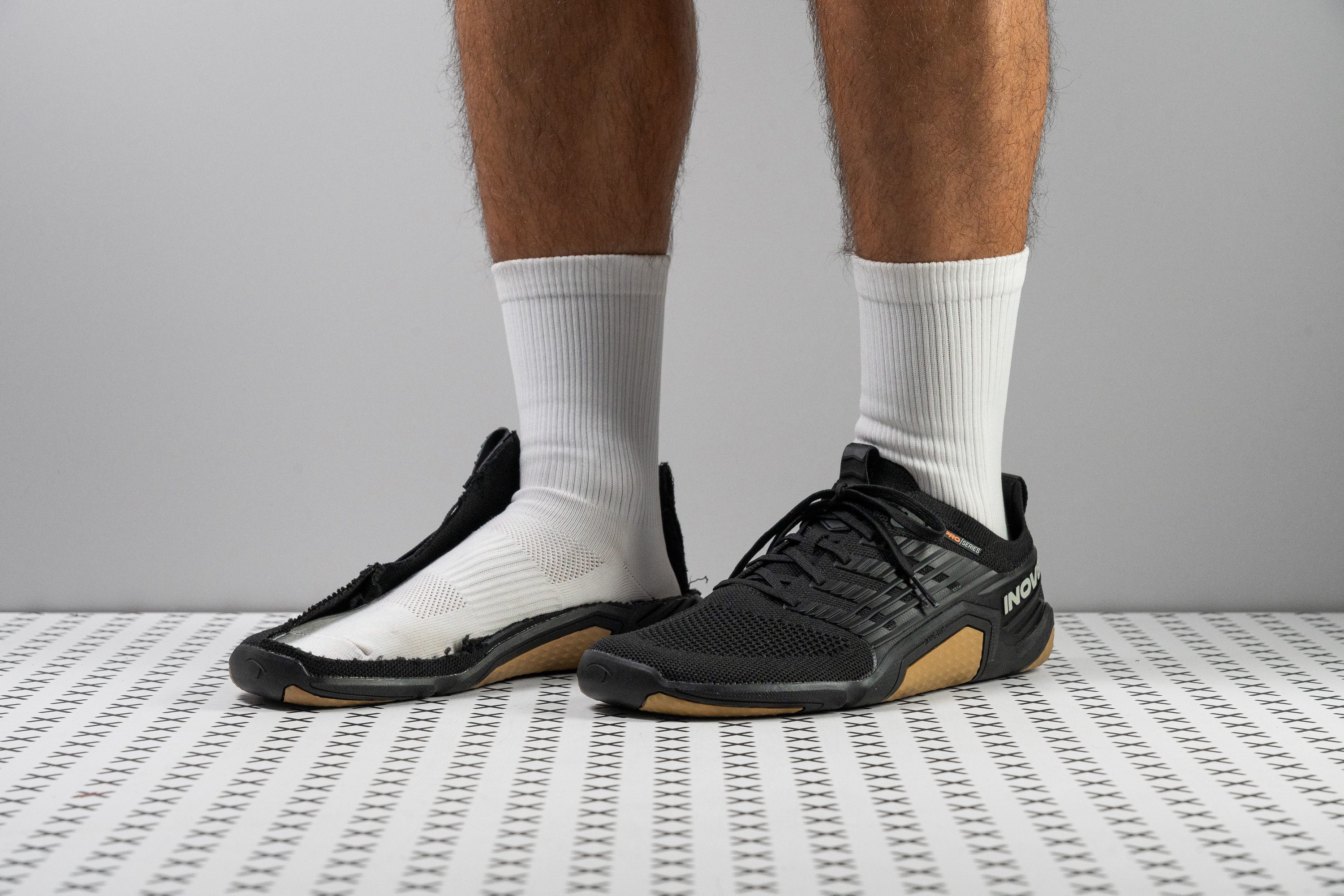










































What makes it the best?
With its barefoot feel, the Inov8 Bare-XF Pro clinched the top minimalist cross-training shoe title, offering freedom and versatility across various exercises. Our lab tests reveal that its light and flexible build boosts our agility. Meanwhile, its low-profile design provides enhanced control, improving stability and precision in jumps and plyometric movements.
During our workouts, we didn’t feel like we had any shoes on, allowing us to move at a snap. Bare-XF Pro feels like second skin, and our scales confirm it’s only 8.7 oz (248g), 19.0% below average.
Adding to its lightness is its unresisting build from all directions. Whether we need to bend or twist our feet in lunges, planks, or stretches, Bare-XF Pro freely surrenders to our movements. Our manual assessment awarded it the lowest torsional rigidity score of 1/5, while our bend test confirms it’s 67.3% more flexible than average. These insanely low figures prove the shoe’s minimal resistance allows us to be in full control of our movements.
The shoe feels grounded, which our calliper confirms with the lowest stack height we’ve ever measured in a trainer: 6.9/6.8 mm. Together with its genuine zero drop (0.1 mm), we experienced better control and secured stability.
However, its traction embodies minimalism too, receiving a low rating of 0.19 in our wet-condition test. We didn’t feel as surefooted on dusty or wet floors, so it’s best to avoid these types of surfaces.
Pros
- True barefoot-like experience
- Foot-shaped and roomy toebox
- Super lightweight
- Extremely flexible
- Sock-like in-shoe feel
- Promising durability
- Protection for rope climbs
Cons
- Pricey for its kind
- Moderate breathability
- Subpar outsole girp
Best cross-training shoes for Crossfit
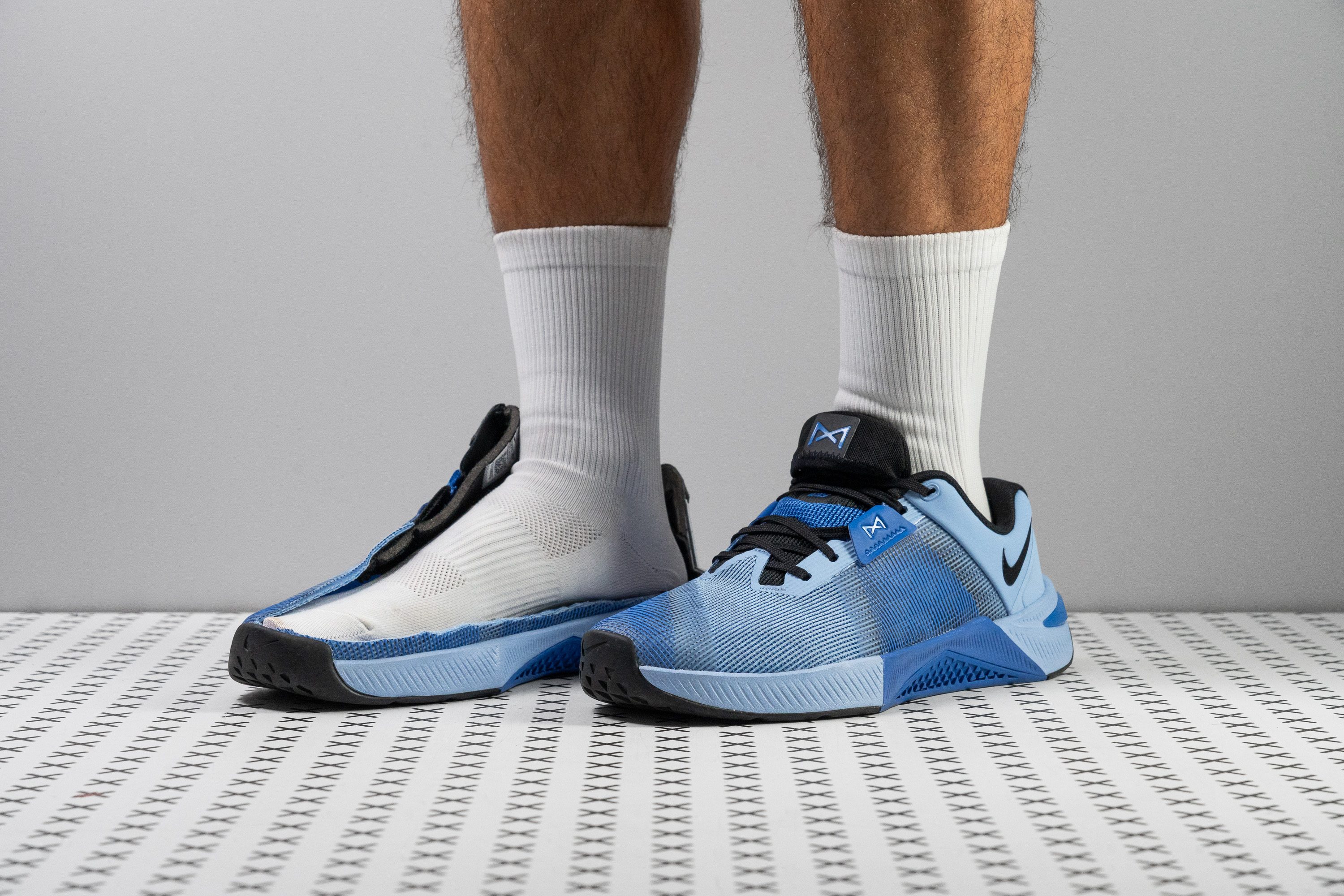














































What makes it the best?
We’ve rounded up over a hundred of the best cross-training shoes and discovered the shoe most targeted for CrossFit — Nike’s Metcon 10. Our lab results and actual workouts confirm its wide and supportive build, adaptability, and grippy outsole support multiple types of workouts.
Despite the absence of the typical raised heel of weightlifting trainers, Metcon 10 offers unwavering stability. It has a vast platform for more control and better balance. Our calliper shows the midsole is 115.2/90.8 mm. Such a large area of ground contact stabilises our form.
Paired with a midfoot band and a protective upper, it delivers a strong and secure lockdown that keeps us in place. It highly resists excessive lateral motions, proven by its 4/5 torsional rigidity score. Under the heel is a sturdy and non-compressible Hyperlift plastic that further avoids wobbles when lifting heavier loads.
Further enhancing our stability is the excellent traction on gym mats, avoiding slips during jumps and jerks. This is crucial in activating the right muscle groups and avoiding mishaps and injuries. Our wet-condition test confirms its strong grip with a result 11.7% above average.
What Metcon 10 lacks is ventilation for humid days. We found that it’s a good place to be in only on cooler days.
Pros
- More versatile Metcon overall
- One of the lightest Metcons ever!
- ReactX adds shock absorption and energy return
- Increased forefoot flexibility
- Still amazingly stable for weightlifting
- Fantastic upper durability (even for rope climbs)
- Great grip on gym floors
- Highly secure foot lockdown
- Accommodating fit and toebox
- Handy Lace Tuck
Cons
- Outsole could be more durable
- Upper lacks breathability
Best cross-training shoes for HIIT






















































What makes it the best?
Among cross trainers we’ve tried, the Nike Free Metcon 6 hits all the essentials of a HIIT shoe and rose to the top of this category. Proven by our lab, it excels in lightness, flexibility, and stability, allowing us to do intense sessions more gracefully.
It felt like a breeze to move in this shoe, literally! Our scales show it’s only 9.7 oz (274g), 10.5% below average. Moreover, the finely woven mesh upper provides outstanding ventilation, ensuring a consistently refreshing experience. Our lab confirms this with a perfect breathability score.
Besides its weightlessness, FM6’s high level of flexibility adds to its natural feel. From twisting to bending during lunges, planks, and burpees, the midsole gave in. We awarded it a low 2/5 torsional rigidity score in our manual assessment. Meanwhile, in our bend test, it emerged a whopping 76.9% more flexible than average!
This agile trainer proves a shoe doesn’t have to be rigid to be stable. FM6 delivers surefootedness by widening its midsole to 113.9/94.4 mm and inserting a small 27.8 HA foam under the heel, firmer than the whole 22.5 HA cushioning.
However, we find that FM6 lacks cushioning for repetitive jumps and heavy cardio. Those who need more impact protection should check more options.
Pros
- Fantastic breathability
- Very light on foot (lighter than average too)
- Abundant cushioning for HIIT
- Most flexible cross-trainer ever
- Excellent stability for moderate weightlifting
- Sock-like fit in a bootie upper
- Accommodating toebox (for medium feet)
- Great grip on gym surfaces
Cons
- NOT for rope climbs (lacks protection)
- Can be hard to put on (narrow opening)
Best cross-training shoes with a wide toebox
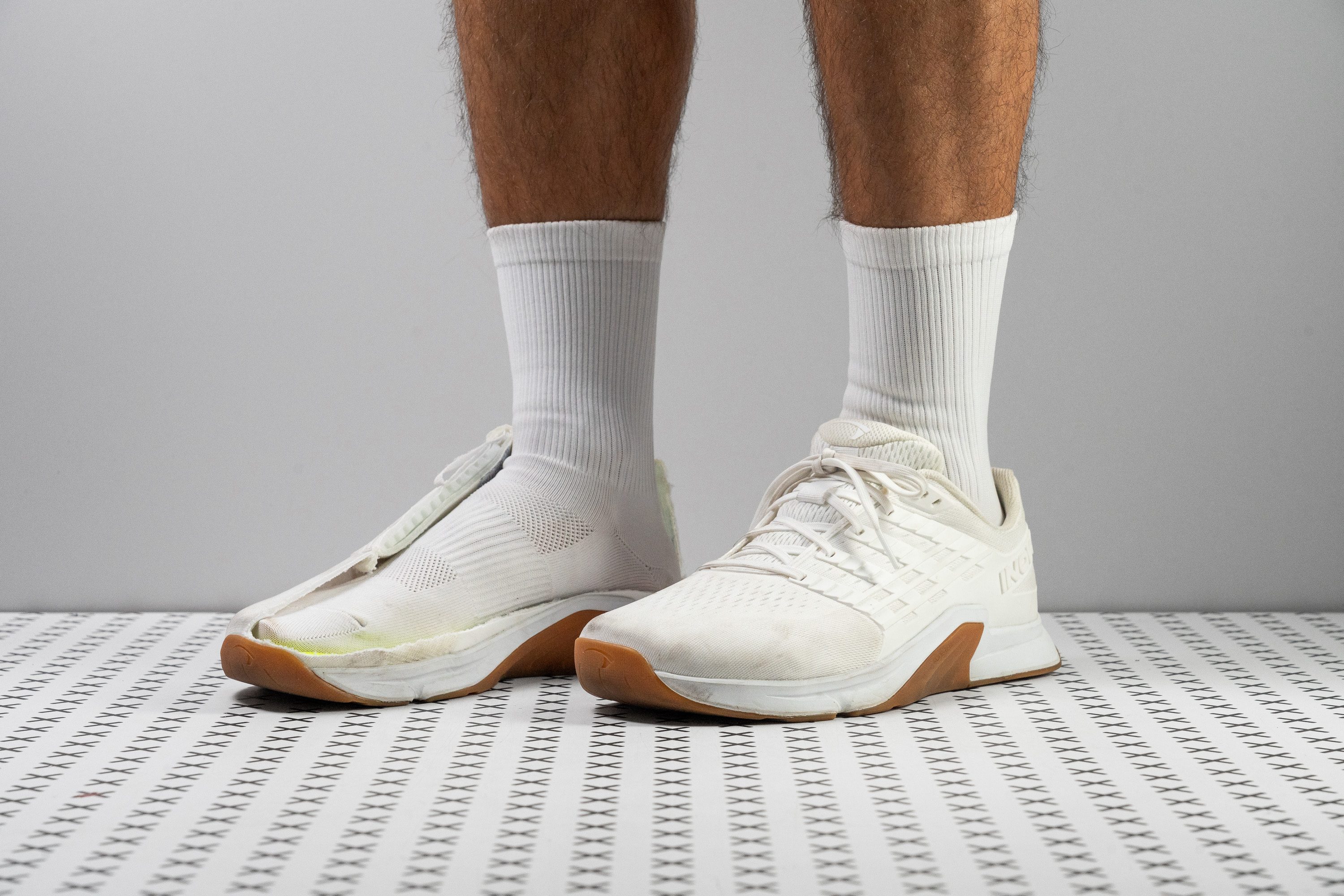










































What makes it the best?
The Inov8 F-Lite proved to be a solid all-rounder in the gym, offering support for lifts and flexibility for lunges, planks, and other workouts. We enjoyed its spacious fit, which we verified through lab testing, making it our top cross-training shoe with the best wide toebox.
We measured our solidified gel mould to confirm the generous room we had for toe splaying, and our calliper returned a wide reading of 78.1 mm in the toebox. That’s much more spacious than the 73.8 mm average! Moreover, it also has tonnes of vertical clearance, measuring 30.7 mm, ensuring we won’t have to deal with black toenails.
The midfoot area features the Met-Cradle cage, which generates lateral stability. When we lift or perform forceful movements, we don’t feel like toppling over since the shoe keeps us secured inside the platform. In our twist test, we awarded it a high 4/5 torsional rigidity score.
When it was time to perform more fluid exercises, the shoe bends freely with us. In our flex test, it even showed 20.8% higher pliability than average, boosting its comfort and versatility.
However, the result of our traction test disappointed us. Athletes who need unwavering traction should find a grippier shoe.
Pros
- Versatile gym all-rounder
- Great balance of cushioning and stability
- Fantastic for wide feet
- Highly flexible forefoot
- Excellent outsole durability
- Protection for rope climbs
- Lighter than average
Cons
- Lacks breathability
- Not for narrow feet
- Not for heavy lifting
- Below-average outsole grip
Best cross-training shoes for lifting
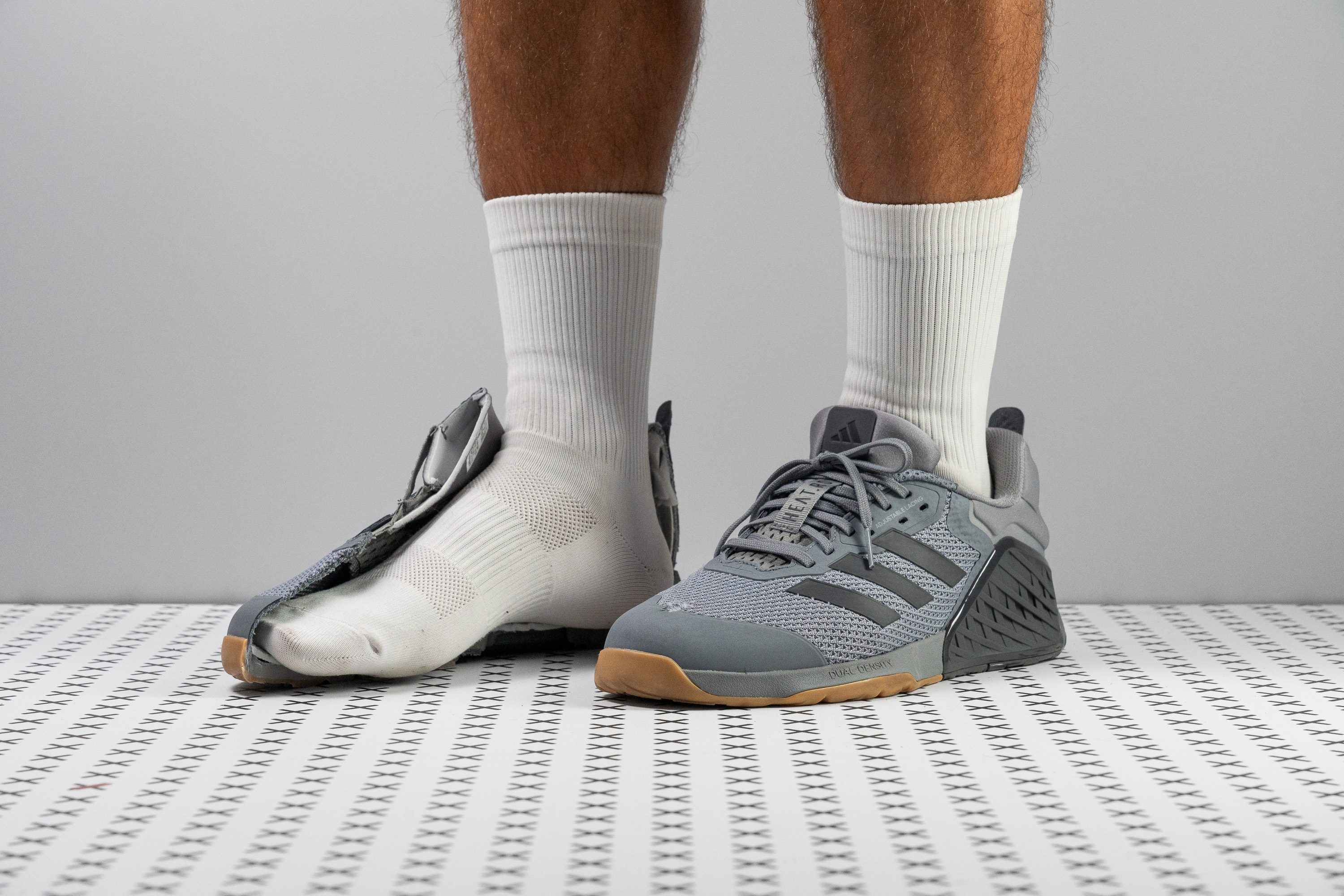






















































What makes it the best?
Among the cross-trainers we brought to the gym and tested in the lab, the 3rd version of the Adidas Dropset is our top shoe for lifting. We never dropped a set because this trainer made us feel so stable and secure with its high ground feel and massive base, and impressively does so without making its structure extremely rigid.
The midsole has a low profile and a dual-density composition that perfectly sets it up for lifting. Our calliper shows a 22.6/14.8 mm stack height, lower than the 24.7/18.4 mm average, enhancing our surefootedness. Our durometer shows a firm 41.0 HA heel so that it doesn’t collapse under heavy loads, and a softer 21.5 HA forefoot for gentler landings.
The Dropset 3 also features a vast 116.9/88.9 mm base, which helps us find our footing securely. We felt well-planted during our sessions, allowing us to add more weight. Plus, the GeoFit Sensepods held our ankles snugly, avoiding any imbalances.
We’re in awe of how the Dropset 3 stabilises us without adding too much rigidity to its structure. Our attempts to twist the shoe got it an average 3/5 rating. Meanwhile, it emerged 30.3% more flexible than the average trainer in our bend test.
However, its effective support pulled the weight department down to a hefty 12.1 oz (343g). Those who prefer more agility should find lighter shoes.
Pros
- Exceptional stability for lifting and lateral movements
- Very wide and grounded platform
- Extra durable and grippy outsole
- Very secure foothold
- Flexible enough for plyometrics
- Fantastic breathability
- Accommodating toebox
Cons
- Not great for running and walking (clunky heel)
- Can't be worn outside because of sole apertures
Cross-training shoes with the best shock absorption
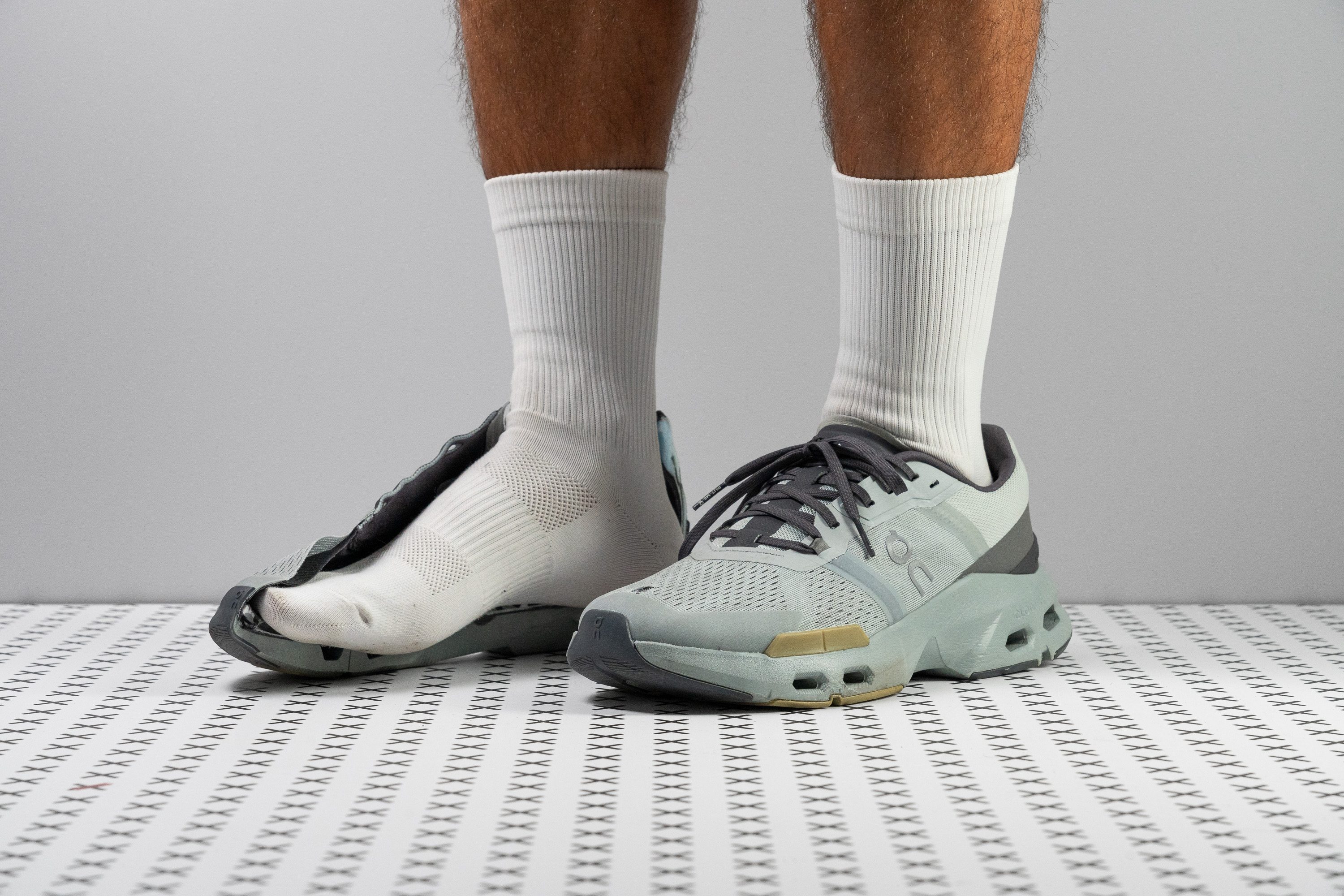





















































What makes it the best?
The On Cloudpulse offers cloudlike landings with its sky-high stack and leg-saving cushioning, making it our best shock-absorbing cross-trainer. Besides its plush platform, it offers elite comfort through its maximum breathability, which we confirmed in the lab. Meanwhile, its strong bite on the ground made us confident in our footwork.
The impact protection Cloudpulse offers makes it ready for high-intensity workouts and repetitive jumps. Using our calliper, we recorded an above-average stack height of 32.9/23.1 mm, reducing the harshness of the ground. We measured the platform’s shock absorption and recorded impressive scores of 104 SA (heel) and 85 SA (forefoot). The heel reduces impact by 23.8% vs. average, and the forefoot by 32.8%!
We tested for its traction under wet conditions and excelled with a 0.45 score. Being 32.4% grippier than average, we performed box jumps, sled pushes, and short sprints with full control.
Cloudpulse felt refreshing on foot, even when the workout sessions became intense. It offers seamless airflow, proven by its 5/5 breathability rating in our smoke test. We had no experience with our body heat or sweat building up.
However, its thick foam made it less forgiving in terms of longitudinal flexibility. Those who prefer a highly natural or barefoot sensation should try another trainer.
Pros
- Excellent impact protection for HIIT and cardio
- Midsole feels responsive for jumps and runs
- Great lateral support and stability
- Highly breathable upper
- Sturdy and durable construction
- Perfect outsole grip for gym floors
- Accommodating toebox
Cons
- Not for heavy lifting (200 lbs/90 kg max)
- Not very bendy forefoot
- Frail toebox mesh (not for rope climbs)
What is a cross-training shoe?
A cross-training shoe is a type of athletic shoe designed for multi-disciplinary workouts and activities. Cross-training shoes are versatile and can be used for a variety of exercises, including weightlifting, running, jumping, and other high-intensity workouts.
These shoes are designed to provide support, stability, and comfort for the feet during intense workouts. They typically have a cushioned yet stable sole to help absorb shock and reduce the impact on the joints.
Type of workouts handled by cross-training shoes
Cross-training shoes are designed to be versatile and support a variety of different physical activities. Here are some of the types of workouts that are well-suited for cross-training shoes:
|
High-intensity interval training (HIIT) and cardio |
Most cross-training shoes have enough cushioning, lateral support, and flexibility to handle high-impact exercises like jumps. |
| Circuit training | Cross-trainers are versatile enough to handle the various types of movements involved in circuit training, including weightlifting, plyometrics, and bodyweight exercises. |
| Weightlifting* | Cross-training shoes typically provide adequate stability and support for weightlifting exercises, including squats, deadlifts, and other strength training movements. |
*For heavy Olympic weightlifting and squats, you may want to consider a dedicated pair of lifters. The elevated heels and non-compressible platforms of these shoes promote the most efficient posture for lifting heavy.
Can you run in cross-training shoes?
While cross-training shoes can be used for running, they do not provide the same level of cushioning and performance as running shoes. But most cross-trainers can handle short runs of 1-3 miles.
If you're a frequent runner, it's recommended to use shoes specifically designed for running to reduce the risk of injury and improve your performance.
If you're an occasional runner or do a variety of activities, cross-training shoes with higher shock absorption can be a suitable option for some warm-up and treadmill runs.
Having measured the shock absorption of dozens of trainers, we recommend choosing the ones with higher SA measurements (at least 90 in the heel) for the running bits of your workouts.
Cross-training shoes vs. Crossfit shoes
Cross-training shoes are a broader category of gym footwear that includes CrossFit shoes. So, in a way, they are the same.
But here is what characterises Crossfit-oriented shoes:
Stability: These shoes provide extra stability for weightlifting exercises, especially during heavy lifting, while other cross-training shoes may not have the same level of stability.
Cushioning: They often have minimal cushioning and a low profile to promote a more natural feel for weightlifting and lateral movements.
Durability: Crossfit shoes have sturdier and more abrasion-resistant materials to match the higher demands of this workout regimen. In particular, these shoes have reinforced sidewalls to protect the upper during rope climbs.
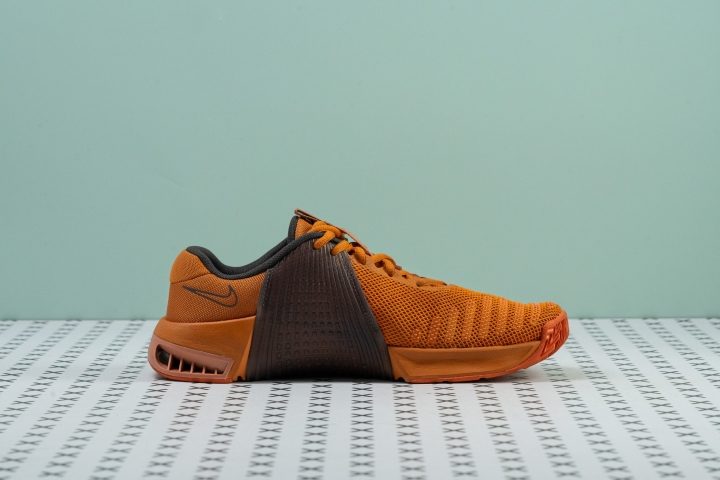
Ultimately, the type of shoe you choose will depend on the specific demands of your workout routine and the types of activities you engage in. If you are primarily engaged in weightlifting and CrossFit-style workouts, a CrossFit shoe might be the better option, while if you participate in a wider range of activities, a more general-purpose cross-trainer might be more appropriate.
How to choose the right cross-trainer for you
Aside from the shoe aesthetics, there are several characteristics that you should pay attention to when choosing a pair of cross-trainers:
- Heel stack and drop
- Midsole firmness
- Flexibility of the shoe
- Lateral support and stability
- Durability of the shoe
- Breathability of the upper
- Shoe size and toebox fit
It may seem overwhelming at first but getting these parameters right will make your future trainer feel like it's been fine-tuned to your feet.
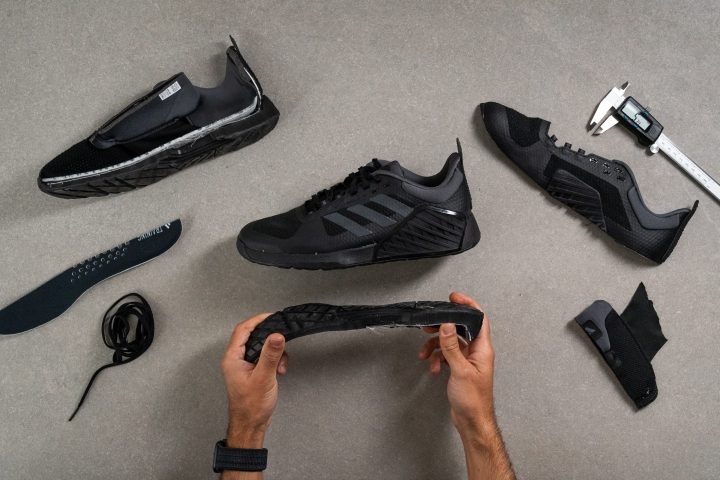
Heel stack and drop: how to choose
Heel stack refers to the amount of material stacked underneath your heel (insole, midsole, and outsole combined). As for the drop, it indicates how much the heel is elevated above the toes inside the shoe.
| Low heel stack (<24 mm) and drop (<8) | High heel stack (>24 mm) and drop (>8 mm) |
| creates a more grounded platform for Crossfit or any other exercises that call for a stable basis | offers more support and impact protection if you're engaging in lots of jumping or running |
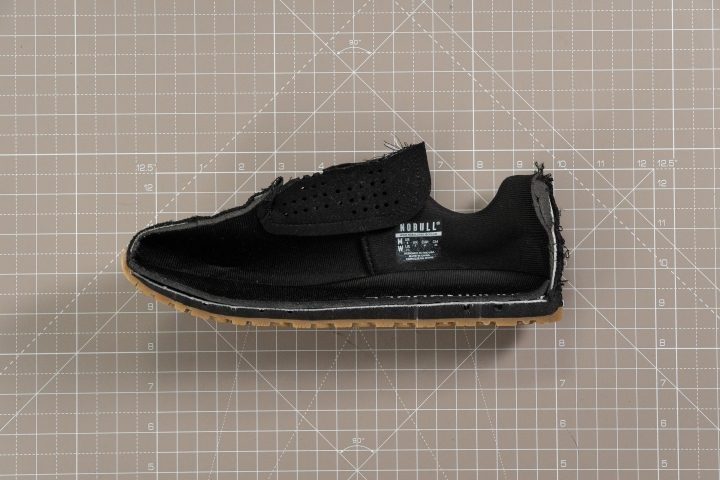
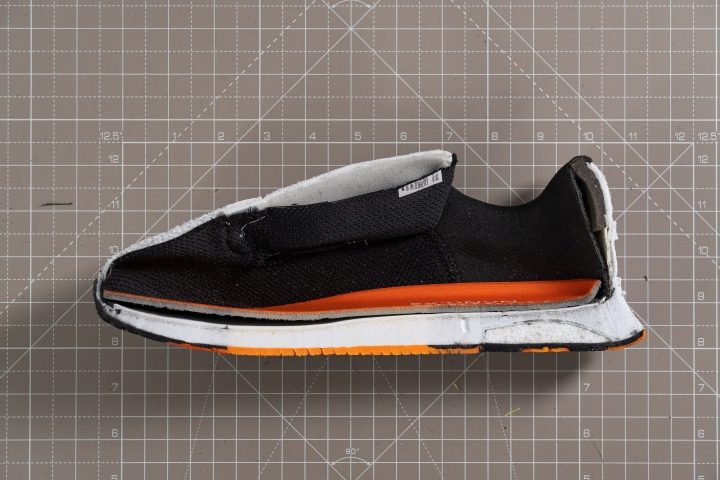
Midsole cushioning in cross-trainers
Most often made of foam, cross-training shoe midsoles provide the cushioning needed to dampen the impact of exercise on one's feet and joints.
But not all cross-trainers are equally cushioned. Some provide more generous shock absorption, while others are very low-profile and minimally cushioned. Depending on your type of exercise and personal preferences, you may prefer one of the following:
| Shock absorption | Best for |
| High (90 SA or more) |
|
| Shock absorption | Best for |
| Medium (80-90 SA) |
|
| Shock absorption | Best for |
| Low (80 SA or less) |
|
Flexibility of cross-training shoes
A cross-training shoe should be flexible enough for exercises like jumps, runs, lunges, and planks. However, some trainers are made significantly more flexible than others.
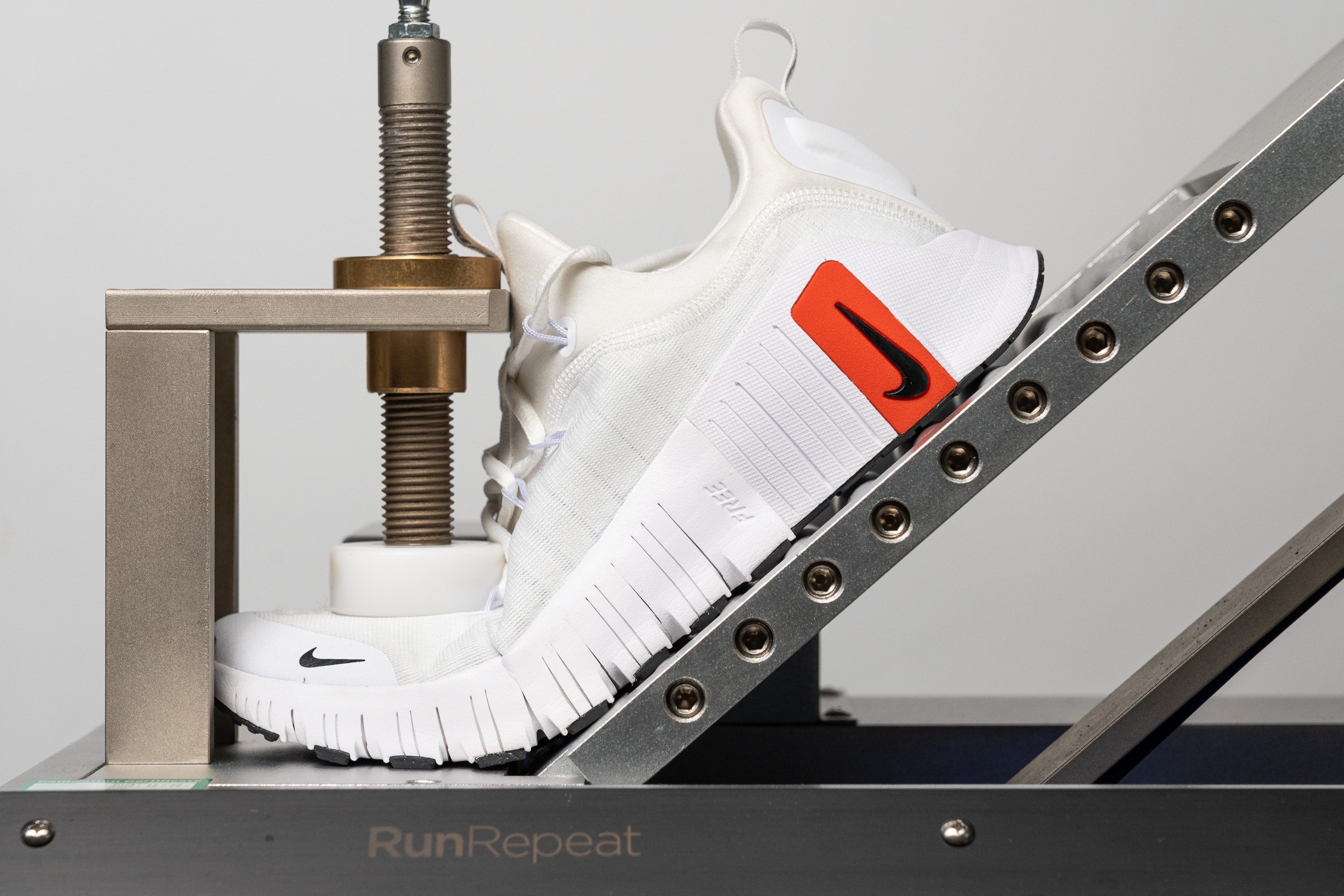
We use a specialised machine to test the stiffness of cross-training shoes. First, we secure the toebox in place, then, because the heel lifts slightly, we adjust the position of the bottom plate so that the heel rests on it, and then we bend the shoe for 30 degrees. We measure how much force was needed for this action. More force = stiffer shoe.
Lateral support and stability
Whether you are squatting with a heavy barbell or moving forcefully side-to-side, a good pair of cross-trainers will never make you feel wobbly.
In our lab, we measure a few parameters that indicate a highly stable trainer:
- midsole firmness
- torsional rigidity
- heel counter stiffness
- midsole width in the widest parts (both forefoot and heel)
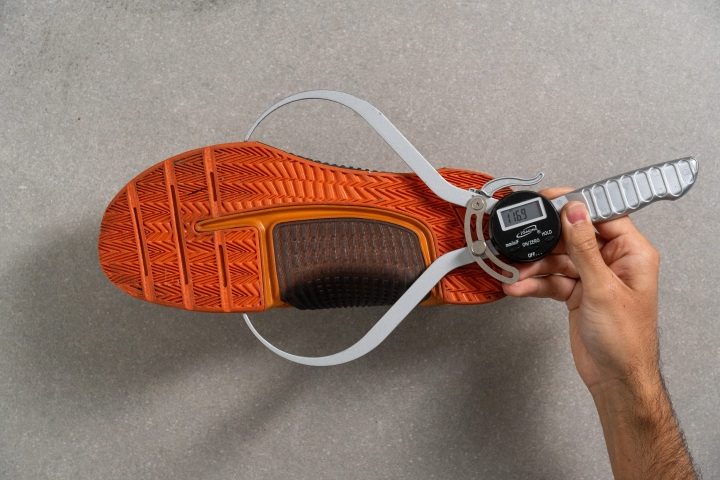
Checking the durability of cross-training shoes
Cross-training shoes must be able to withstand the various types of physical activity that you engage in during your workouts. Their uppers should not easily rip or tear and the rubber outsole should be resistant to abrasion.
We put each cross-trainer through a series of demanding durability tests with a Dremel.
*Outsole durability: a lower number means more durable. It refers to the depth of the dent left by the Dremel.
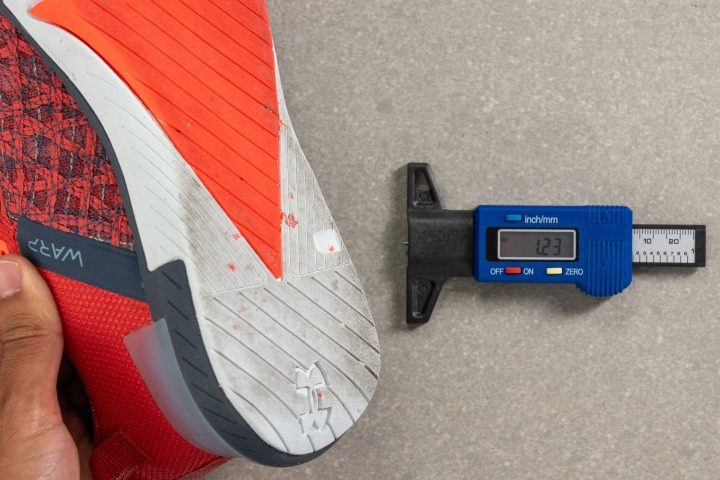
Planning to wear cross-trainers outside? Check the outsole
And if you plan to wear your future cross-trainer outside the gym, you must be especially demanding in the durability department. Asphalt and other abrasive outdoor surfaces can eat through the outsole much faster. Thus, you should look for the following:
- a full-length rubber outsole
- a thick layer of rubber (at least 4 mm)
- durable outsole (minimal damage after the meeting with our dremel)
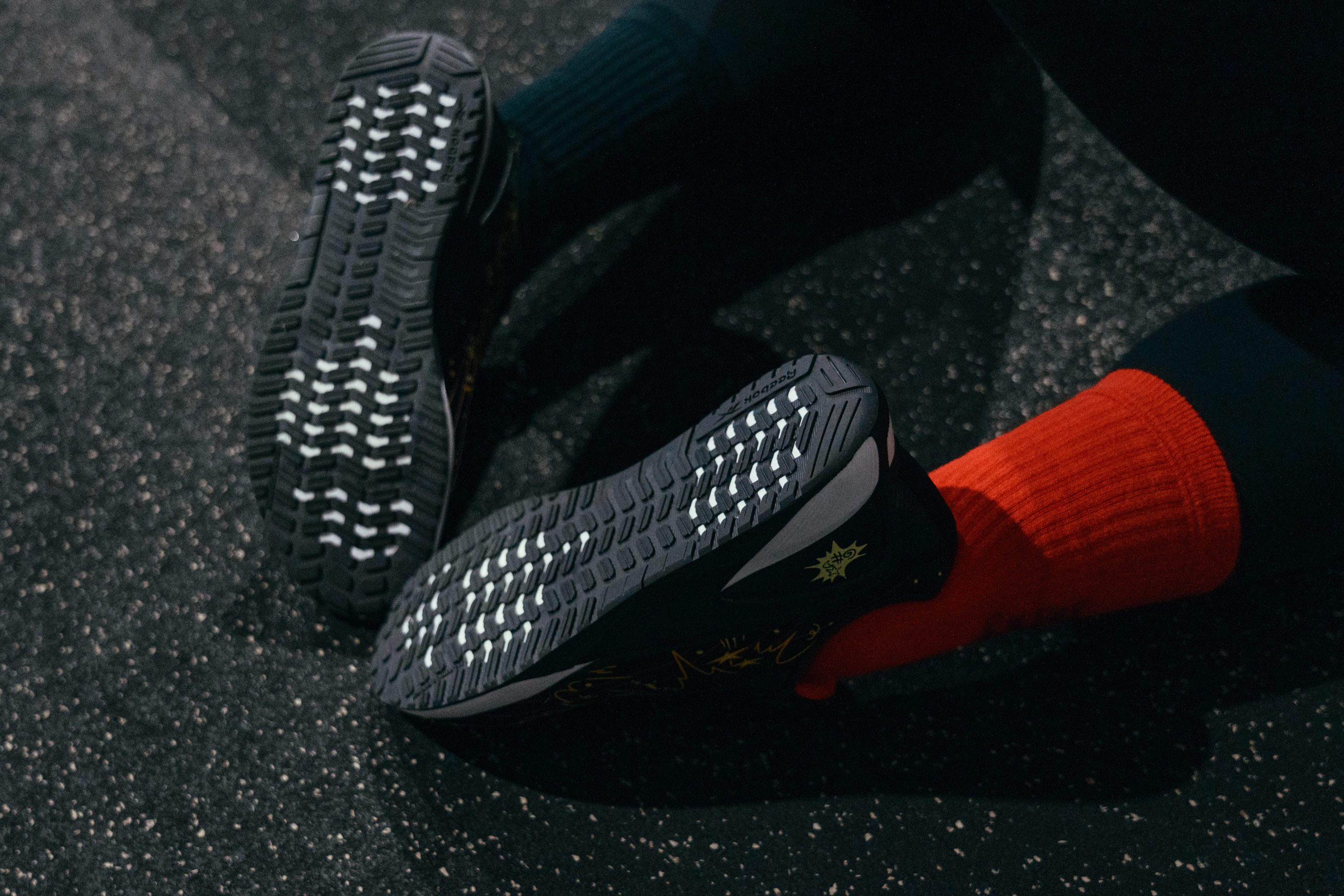
Consider breathability
A cross-trainer with sufficient ventilation will keep your feet cool and comfortable during intense workouts.
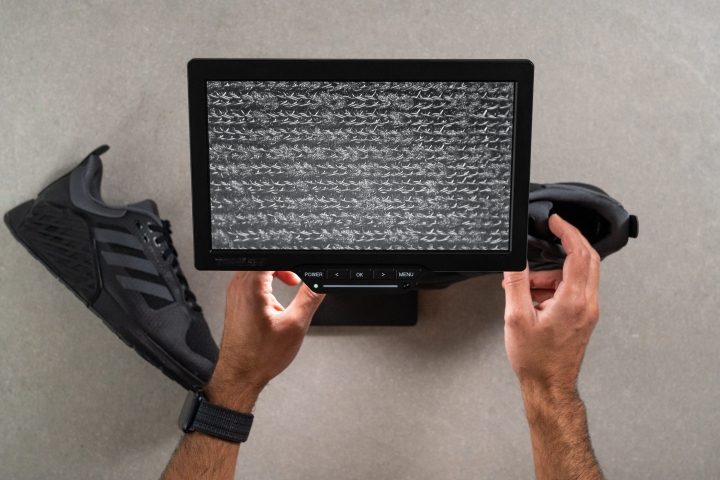
Shoe size and toebox fit in cross-trainers
In most cases, getting a cross-trainer in your regular athletic shoe size works just fine.
But if you are ordering online and it's been a while since you last purchased a pair, then we recommend taking the following steps to ensure the right size:
- measure your foot length precisely
- consult the corresponding brand's size chart
- check if the shoe you want runs true to size and width (e.g., in our lab reviews or user reviews online)
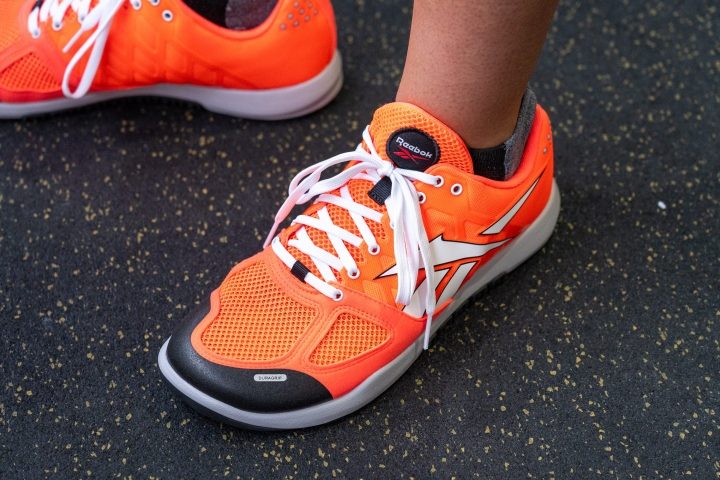
Getting the right size length-wise is great, but you must also consider the internal space provided in a given cross-trainer.
A toebox is the front part of the shoe that provides room for the toes to move and helps protect them from injury. A good toebox should provide enough room for your toes to move freely and comfortably, without feeling cramped or restricted. Being able to splay your toes is essential for feeling stable when lifting or balancing on one foot.
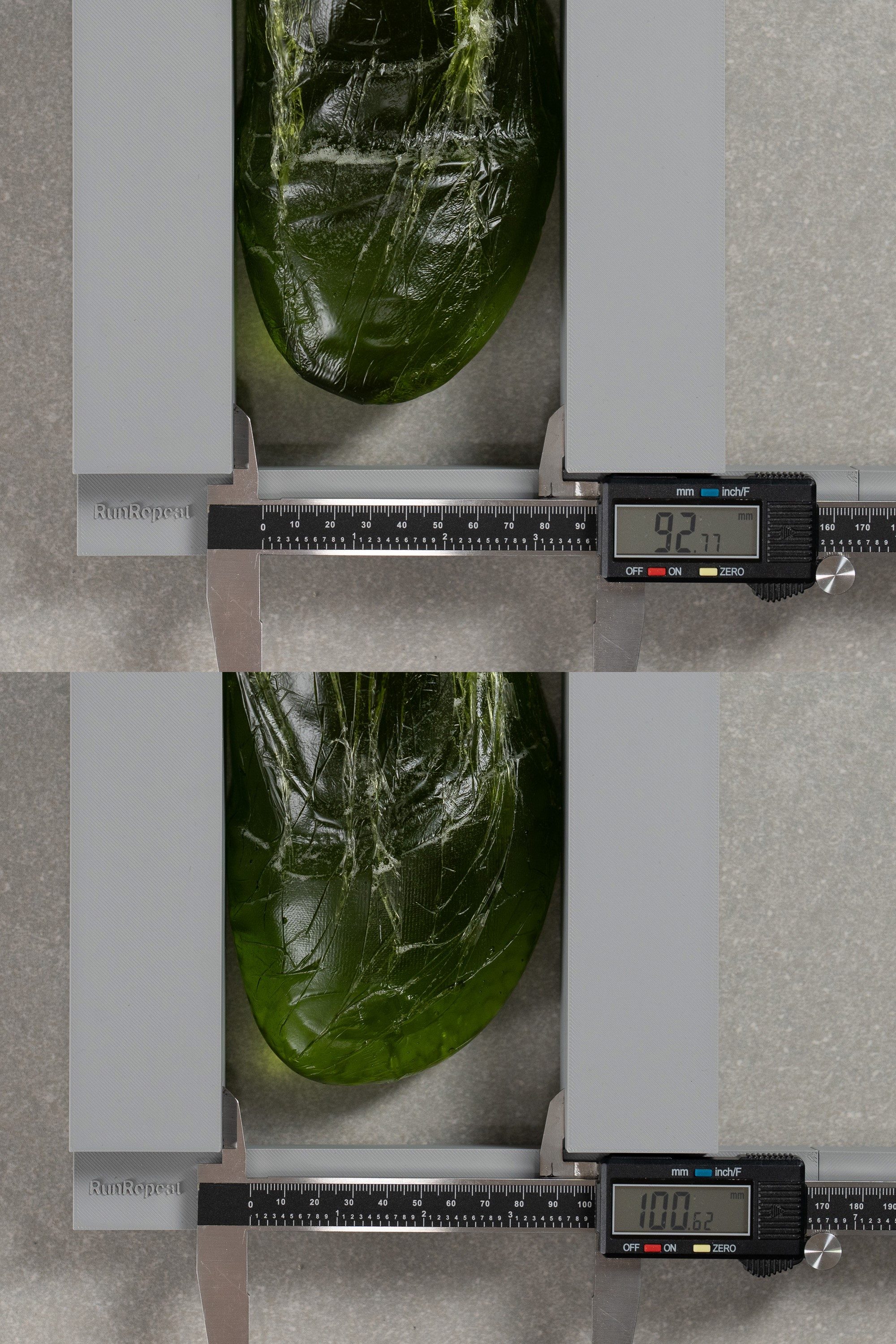
We measure the width of each cross-trainer in both the widest part and at the big toe. This gives a better idea of a shoe's dimensions and whether its toebox is tapered or not.
